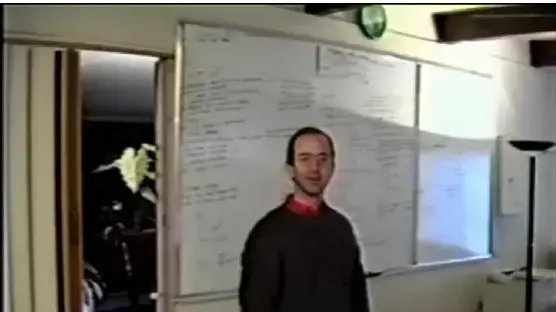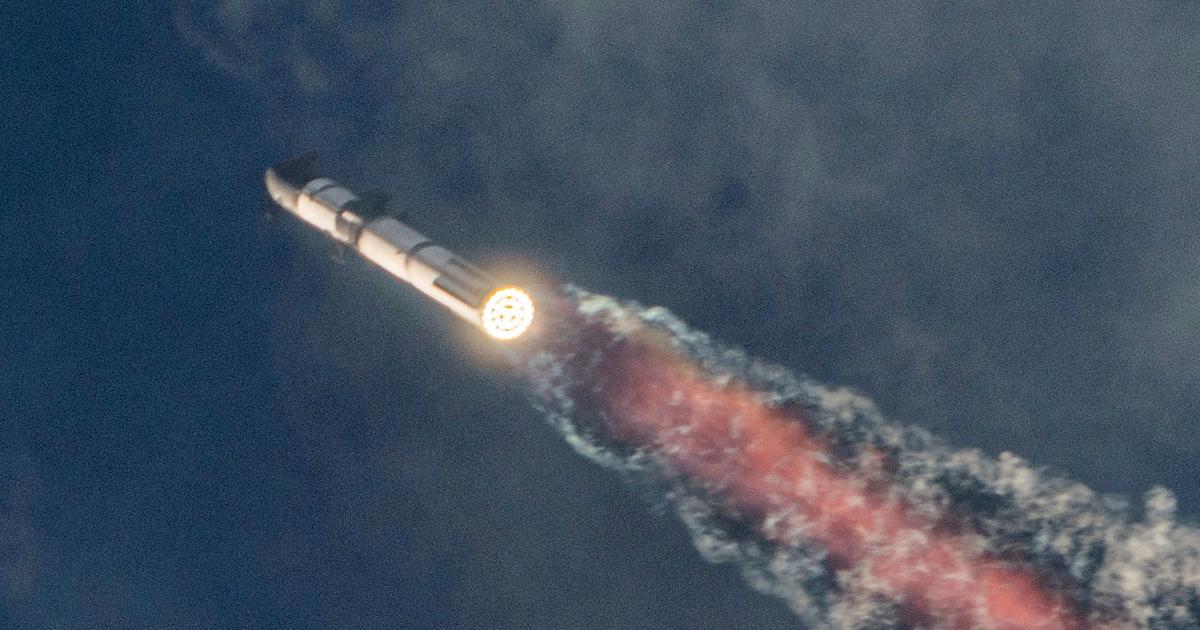Jeff Bezos will travel to space in his own rocket 0:40
(CNN Business) -
Jeff Bezos can have anything.
You could go around the world in a private jet or sail forever in a fleet of megayachts.
He could afford to buy the entire NFL;
You could buy an archipelago for your family and friends.
it could buy more than 65,000 Bugatti Chirons (base price US $ 2.9 million), although only 500 are being built. As the richest person in the world, the possibilities are endless.
But Bezos seems willing to risk it all for an 11-minute trip to space.
How risky is your decision?
The answer is not what you might expect.
Space travel is historically fraught with danger.
Although the risks are not necessarily astronomical for Bezos' excursion into the cosmos, as his space company Blue Origin has spent most of the last decade running the New Shepard suborbital rocket in which it will travel through a series of test flights. successful.
(Plus, being in space is Bezos's lifelong dream.)
Still, what Bezos, his brother Mark Bezos, and the winner of an online auction will do: perform the first ever crewed flight of New Shepard, a fully autonomous suborbital spacecraft and rocket system designed to take ticket holders to a brief joy - walks into space - is not entirely without risks.
This is what Bezos's flight will look like and just how far people are taking life into their own hands when they go into outer space these days.
Mission NS-15 lifted off from Launch Site One in West Texas on April 14.
What the flight looks like
When most people think of space flight, they think of an astronaut circling the Earth, floating in space, for at least a few days.
advertising
That's not what the Bezos brothers and their fellow travelers will do.
They will get on and off immediately, and they will do it in less time (about 11 minutes) than it takes most people to get to work.
Suborbital flight is very different from orbital flight of the kind that most of us imagine when we think of space flight.
Blue Origin's New Shepard flights will be short round trips, though they will travel more than 100 kilometers above Earth, which is widely considered to be the edge of outer space.
Orbital rockets need to pack up enough power to reach at least 17,000 miles per hour (2,759 km / h), or what is known as orbital speed, essentially giving a spacecraft enough energy to continue rotating around Earth instead of be immediately pulled down by gravity.
Suborbital flights require much less power and speed.
That means less time is required for the rocket to burn out, lower temperatures burning the exterior of the spacecraft, less force and compression to tear the spacecraft, and generally less chance of something going very wrong.
NASA seeks to simulate lunar gravity on Earth 1:31
New Shepard's suborbital travel reaches about three times the speed of sound, about 2,300 miles per hour (3,701 km / h), and they fly straight up until the rocket uses up most of its fuel.
The crew capsule will separate from the rocket at the top of the trajectory and briefly continue upward before nearly hovering at the top of its flight path, giving passengers a few minutes of weightlessness.
It works like an extended version of the weightlessness you experience when you reach the top of a roller coaster, just before gravity pulls your car, or, in Bezos's case, his space capsule, heads towards the ground.
The graphic shows the flight profile of Blue Origin's New Shepard.
18 facts about Blue Origin, Jeff Bezos' company that travels to space
The New Shepard capsule then deploys a large column of parachutes to slow its descent to less than 20 miles per hour (32 km / h) before it hits the ground.
The rocket, which flies separately, re-ignites its engines and uses its on-board computers to execute a point and vertical landing.
Booster landing looks similar to what SpaceX does with its Falcon 9 rockets, although those rockets are much more powerful than New Shepard and, yes, more likely to explode on impact.
Blue Origin successfully launches spacecraft with food technology for space
How big are the risks?
Blue Origin's New Shepard capsule, which is fully autonomous and requires no pilot, has never had an explosive accident in 15 test flights. And the nature of Bezos' flight means that it carries some inherently lower risks than the more ambitious space travel attempts. But that doesn't mean the risk is zero either.
Because suborbital flights don't require as much speed or the intense process of trying to re-enter Earth's atmosphere at incredible speeds, they are considered much less risky than orbital flights.
With an orbital reentry, a spacecraft's external temperatures can reach up to 3,500 degrees Fahrenheit (1,926 degrees Celsius), and astronauts can experience 4.5 Gs of force that is also placed on the spacecraft, all while the atmosphere is thickening. whip the capsule.
The space tourists who preceded Jeff Bezos 1:08
High speeds and high altitudes carry inherent risks, and even small mistakes can have big consequences. Earth's atmosphere is generally not considered capable of surviving for a significant period of time above altitudes of 50,000 feet (15.24 kilometers) without a spacesuit, and Bezos will travel up to 350,000 feet (107 kilometers). . But the capsule you're traveling in will be pressurized, so you don't need a special suit to keep you safe, and you'll have access to an oxygen mask if the cabin loses pressure.
The spacecraft is also equipped with an abort system designed to throw the New Shepard capsule and passengers away from the rocket in an emergency.
There are also backup safety features to help the capsule land smoothly even if a couple of its parachutes don't deploy.
But still, there is no way to absolutely guarantee safety in case New Shepard malfunctions.
Although suborbital flights are less risky than orbital missions, they can still be deadly.
One of Virgin Galactic's suborbital space jets, for example, broke down in 2014 when one of the vehicle's co-pilots prematurely deployed the fading system designed to keep the craft stable as it made its descent.
Additional resistance from the plane tore it apart, killing one of the pilots.
(Blue Origin competitor Virgin Galactic has had three successful test flights of a revamped version of its SpaceShipTwo space plane.)
Blue Origin hasn't encountered similar tragic accidents during its testing phase, although, as an old industry adage goes, space is tough.
But, Bezos has said, the risk is worth it.
Blue OriginSpaceJeff Bezostravel








/cloudfront-eu-central-1.images.arcpublishing.com/prisa/KMEYMJKESBAZBE4MRBAM4TGHIQ.jpg)


/cloudfront-eu-central-1.images.arcpublishing.com/prisa/EXJQILQR5QI7OMVRTERD7AEZAU.jpg)
